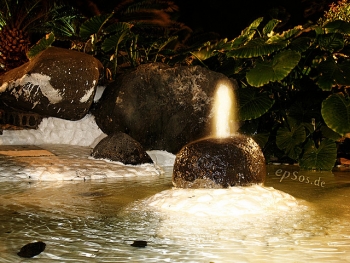Hydropower for the Home: The Basic Components That Go into a DIY Installation

If you have a stream or watercourse running past your home, you should consider investing in a micro hydro system to produce some free and clean electricity.
Many people underestimate the amount of energy that the flow of water can generate. They believe that it can take a large power generation system to produce any usable power, at all. It's possible that they get this idea from the only other power generation turbine they've seen - wind turbines. It can take a large wind turbine to generate even a small amount of power.
Wind turbines need to be large to be able to harness flowing air - a sparse medium. Flowing water, on the other hand, is a dense medium. It only takes a 2-inch pipe delivering a concentrated flow of water to turn a turbine fast enough to produce 100 W of hydropower for the home.
Perhaps the best part about harnessing the power of flowing water is that it is power that tends to be reliable. Unlike solar panels that generate power from a sun that goes down at least 10 hours a day or from wind turbines that use intermittent wind to put out power, rivers and streams don't dry up from one part of the day to the next. Even if they are seasonal, they tend to flow reliably through an entire season at a time.
What kind of water flow do you need to generate power?
Certain advanced and expensive all-in-one micro hydro generator designs are built to be placed right in a watercourse. These power generation appliances look like small jet engines. The enclosure contains the turbine and the generator it turns, all in one compact unit. If you wish to spend just a few hundred instead of a few thousand, though, you'll have to build a system yourself - out of cheap parts.
To generate power out of the water flowing along a watercourse, you need to stop a part of it with a diversion, tap the water out, take it to a height and have it drop down on a turbine. In most small streams, you'll need to divert the entire flow available to a small turbine to generate about 100 W of power.
The components that go into a basic system for hydropower for the home
To put a basic micro hydro generation system together, you need the following components.
· The penstock (a screened water intake): The penstock is the water intake pipe that you place in the stream. Water flows up it and goes to the turbine chamber. Since merely dipping a pipe in a stream won't get the water in the stream to travel up the pipe, you need to build some kind of diversion or dam in your stream to give the water no way out but your penstock. Building a diversion can be a complex matter that requires planning permission from local authorities.
· A turbine: When you build a baffle, diversion or dam on a stream, it can force water with considerable pressure up the penstock. You need a turbine at the other end to take advantage of this pent-up pressure. A number of different turbine technologies are available for different kinds of water pressure and water head (the height from which water drops on the turbine). You'll need to find a model that's the right design for your installation.
· Power generating equipment: The turbine needs to transfer its motion to power generating equipment. In projects involving hydropower for the home, it's best to use equipment that generates alternating current. Only larger projects should use a generator - an appliance that produces direct-current that needs to be converted to alternating current down the line.
· Electronics to smooth out the power: It can be difficult to directly use the power coming out of an alternator. Every minor change in the turbine's speed could have the effect of raising or lowering the amount of power and voltage coming out. You either need batteries and an inverter to allow you to store the power and take out a regulated power stream or electronics to regulate power from the alternator for immediate use.
You may not be able to apply for the Feed-In Tariff or a subsidy if you take the DIY route
People investing in hydropower installations do get subsidies and grants from the government. They have to order their installation from a professional installer approved by the Microgeneration Certification Scheme. Without this, you don't get in on the Feed-In Tariff system.
